2024 Annual Report:
Preserving Black Churches Project sustains a sacred American history.
For more than 400 years, Black churches in America have nurtured faith, education and the struggle for freedom. From the earliest days of slavery, Black churches have withstood centuries of violence, given birth to the Civil Rights Movement and influenced American culture. They continue to serve as the physical and spiritual cornerstones of countless neighborhoods in communities across the country.
They are the “heart and center of the African American experience,” according to Brent Leggs, executive director of the African American Cultural Heritage Action Fund and senior vice president of the National Trust for Historic Preservation (National Trust).
Beginning in 2021, Lilly Endowment grants totaling $60 million to the National Trust have supported the Preserving Black Churches Project of the African American Cultural Heritage Action Fund at the National Trust. By providing grants and educational support to congregations across the United States, the project is helping churches manage and maintain their physical structures, protect their legacies, and advance their missions into the future.
Preserving these sacred spaces, which have long been overlooked and underfunded, is critical to a fuller understanding of American culture and history, according to Leggs.
“The Black church is the oldest institution created and managed by Black Americans,” Brent Leggs said. “The Black church has played an important role in faith and religion, of course, but also in fostering community and a sense of belonging.”
Birthplace of Gospel Music
The Black church also stands as a living testament to its lasting influence on American culture, including preaching, teaching, civil rights and music. Ebenezer Missionary Baptist Church in Chicago, regarded as the “Birthplace of Gospel Music,” serves as a prime example.
Designed as a synagogue by renowned Chicago architect Dankmar Adler, the Classical Revival structure was completed in 1899 on the city’s South Side for a predominantly German Jewish congregation, Isaiah Temple. Two decades later, the Great Migration brought millions of Black Americans seeking opportunity and personal freedom from the rural South to northern cities, including Chicago. In 1921, the Jewish congregation sold its building to Ebenezer Missionary Baptist Church, a rapidly growing Black congregation.
With its vaulted, coffered ceilings and carefully engineered acoustics, Ebenezer was destined for musical greatness. In 1931, Ebenezer’s music director Theodore Frye organized the first gospel choir with the pianist and composer Thomas A. Dorsey, famed for writing “Take My Hand Precious Lord” and recognized as the “Father of Gospel Music.”
Their partnership contributed to the new form of sacred music influenced by traditional African American spirituals and secular rhythm and blues. Over the years, gospel legends Mahalia Jackson and Sallie Martin, jazz pianist and vocalist Dinah Washington, and even rocker Bo Diddley performed at Ebenezer. Civil rights leaders, including the Rev. Dr. Martin Luther King Jr., Ralph Metcalfe and Adam Clayton Powell Jr., also preached and lectured there.
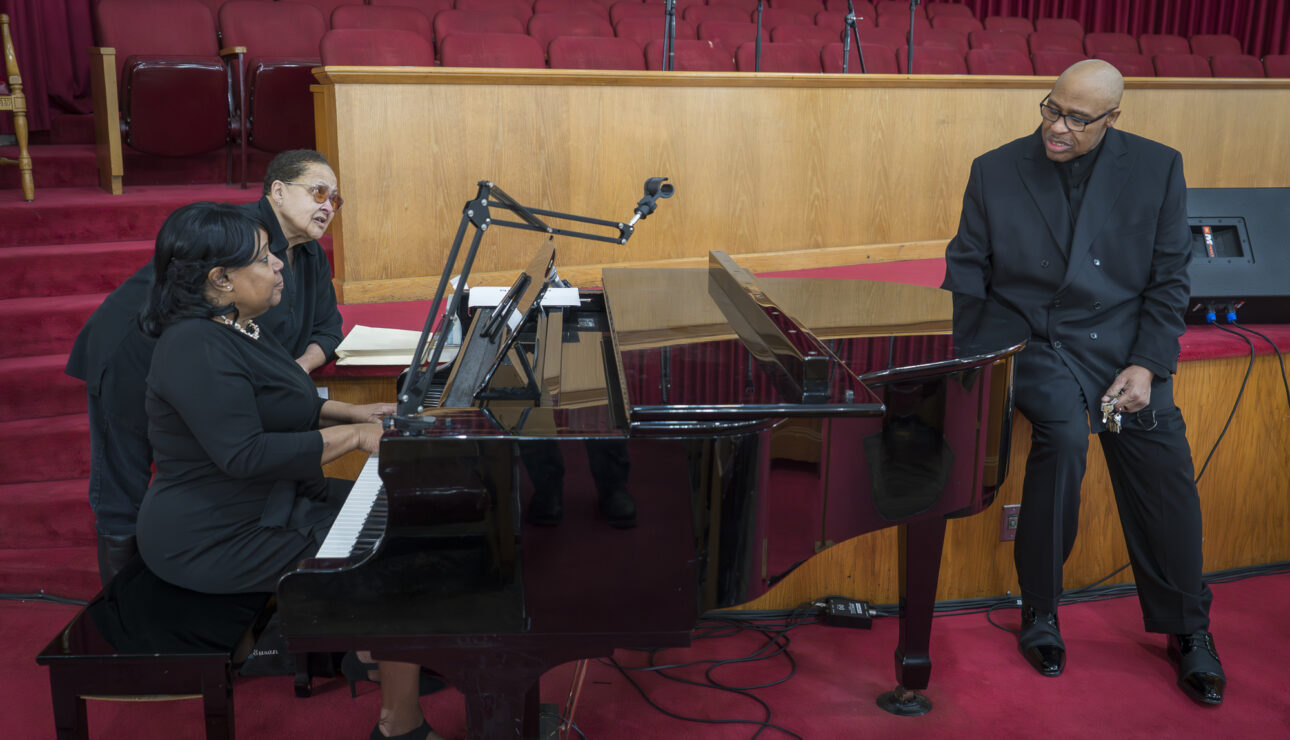
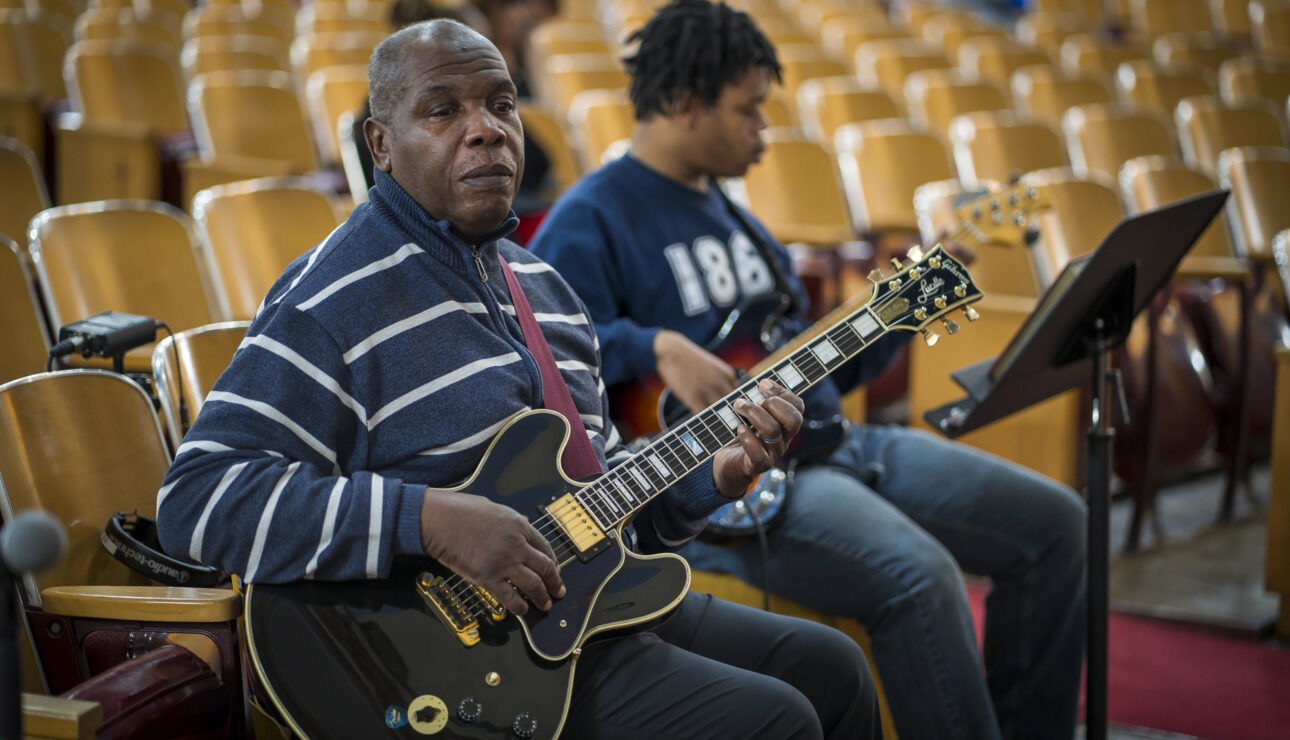
The Rev. Darryl N. Person (below right), who grew up at Ebenezer and whose ancestors and relatives have been members for generations—his grandfather was a deacon, his father a trustee, and his mother a minister of music—returned to the church as senior pastor in 2019 after a career as a U.S. Navy chaplain. But even with his long association with Ebenezer, Person wasn’t aware of the church’s historical significance until well into adulthood.
 “Ebenezer has a storied history as the ‘Birthplace of Gospel Music,’ but when I was growing up, the leadership didn’t really promote it,” Person said. “I met many of the artists who came through, but I didn’t realize that they were gospel music legends until I was older.”
“Ebenezer has a storied history as the ‘Birthplace of Gospel Music,’ but when I was growing up, the leadership didn’t really promote it,” Person said. “I met many of the artists who came through, but I didn’t realize that they were gospel music legends until I was older.”
“When I learned more about the history, I was in awe,” he said. “This really is a special place.”
Equally awe-inspiring are the steep costs of maintaining a building that is more than a century old, even one as well-designed and solidly built as Ebenezer.
As years passed, it became increasingly clear that Ebenezer’s auditorium-style sanctuary and the adjacent educational building needed urgent repairs, primarily due to decades of deferred maintenance. Person recognized that the smaller, aging congregation lacked the resources to fund the repairs and saving the historic church would require external resources and support.
In 2023, there was good news. In the first round of grants in the Preserving Black Churches Project, Ebenezer was one of 35 historic Black churches to receive funding. The grant enabled Ebenezer to embark on much-needed roof and façade repairs.
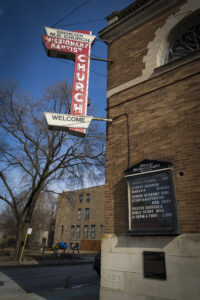
Ebenezer Baptist Church in Chicago, Ill.
Today, the church’s leadership proudly emphasizes Ebenezer’s historical significance as the Birthplace of Gospel Music with greater intent. The church regularly welcomes visitors, especially during Open House Chicago—the free public festival that provides behind-the-scenes access to architecturally, historically and culturally significant sites throughout Chicago each fall, as well as during Gospel Appreciation Month every September.
“Lilly Endowment’s support was incredibly important,” said Person. “We’re really better prepared to continue with the next phases of restoring the building, both for its historic importance to Chicago and to ensure that we continue to be here for the community.”
A Holistic Perspective
The work at Ebenezer through the Preserving Black Churches Project is part of a larger effort by the African American Cultural Heritage Action Fund.
Since its launch in 2017, the African American Cultural Heritage Action Fund has raised approximately $150 million and supported 353 preservation projects nationally. It is the largest U.S. resource dedicated to preserving African American historic places, including historically Black colleges and universities, Washington-Rosenwald Schools, and the homes and gardens of influential Black Americans.
With Endowment funding, the Preserving Black Churches Project of the African American Cultural Heritage Action Fund has invested more than $19.4 million in more than 108 churches that either have active congregations or have already been repurposed as important assets to their communities.
Grants, ranging from $50,000 to $500,000, are designed to preserve historic Black houses of worship and to advance preservation activities, including capital projects, programming and interpretation, capacity building, and project planning. These churches represent both rural and urban congregations from 11 denominations.
Among the churches is Mother Bethel AME Church in Philadelphia, which was established in 1794 after Richard Allen and other African American members of St. George’s Methodist Church walked out of worship in protest over the practice of racial segregation at the church. Mother Bethel became the “mother church” of the African Methodist Episcopal Church, the first Black denomination in the United States.
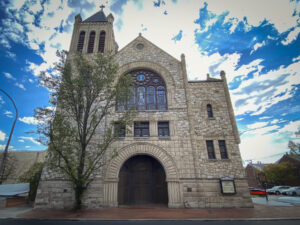
Mother Bethel AME Church in Philadelphia, Pa.
Located less than half a mile from Independence Hall, the church is a historic landmark in Philadelphia. The property upon which the church was built is the oldest parcel of land in the country continuously owned by African Americans and African American congregations. The current building, constructed in 1890, was designed by the architectural firm of Hazlehurst and Huckel in the 19th-century Romanesque Revival style. In 2024, the Preserving Black Churches Project provided a capital grant of $90,000 to help the congregation repair and restore its stained-glass windows.
Immortalized in one window is Allen, the first bishop of the AME Church. Other windows depict the Holy Trinity and Jesus as the Good Shepherd. The church’s “lighthouse window” evokes scriptural references to Jesus as light of the world and a beacon for all who seek refuge and salvation. The windows are a prominent part of tours through which visitors learn the history of the congregation. A basement crypt in the church serves as a museum. It houses Allen’s tomb and other artifacts, including original pews, the original pulpit, ballot boxes once used to elect church officers and muskets used when Allen organized Black troops during the War of 1812.
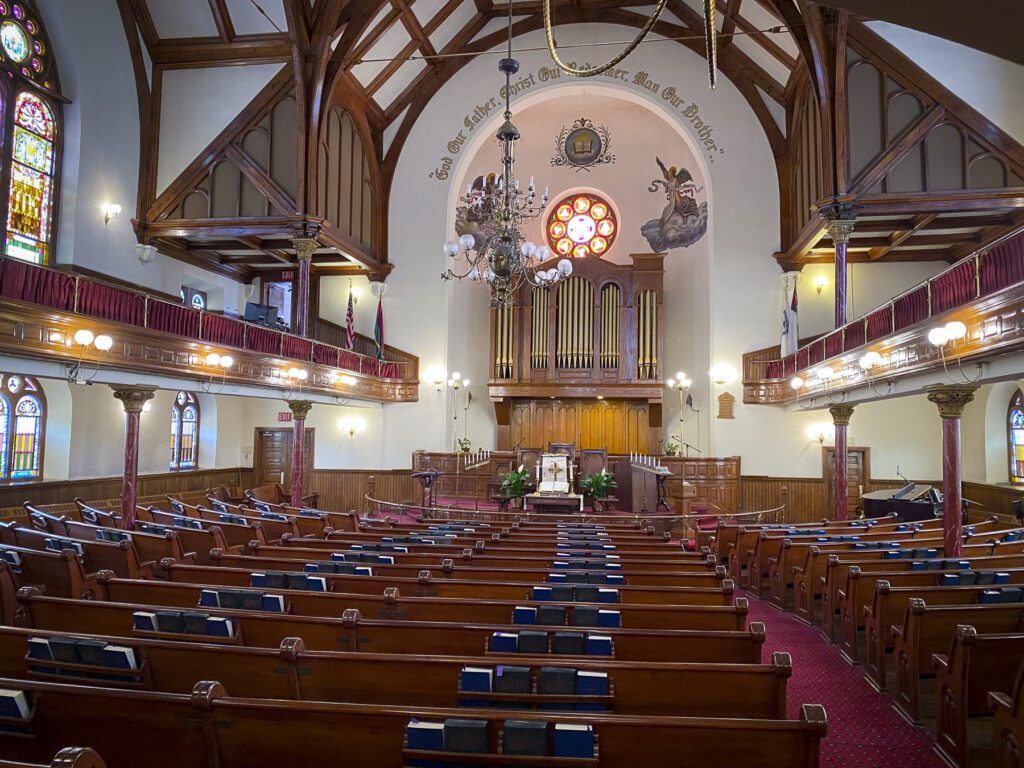
Mother Bethel AME Church in Philadelphia, Pa.
“These windows tell stories of our faith and of this community,” said the Rev. Carolyn C. Cavaness, pastor at Mother Bethel. “The windows reflect scripture, life lessons and the intergenerational stories of this community. I marvel at the interpretation of the windows that is shared with visitors who tour this church. It is an honor to be able to preserve this building, which is a treasure for our church community, for Philadelphia, the nation and beyond.”
Safeguarding a Legacy of Perseverance
The 16th Street Baptist Church in Birmingham, Ala., was founded in 1873 as the First Colored Baptist Church of Birmingham. Wallace Rayfield, the church’s architect and one of the first Black architects in the United States, designed the current building. In 1963, the church became a tragic symbol of the struggle for equality when a bombing carried out by the Ku Klux Klan killed four young girls and injured 22 others. The act of domestic terrorism drew national attention and inspired political action that contributed to the passage of the Civil Rights Act of 1964 and the Voting Rights Act of 1965.
Today, the church is one of seven sites connected to the Birmingham Civil Rights National Monument, which was established in 2017 by presidential proclamation and managed by the National Park Service. The monument seeks to preserve and honor the significant events that took place in the city during the modern Civil Rights Movement era. For Ted Debro, a member of 16th Street Baptist since the 1970s, safeguarding the church’s legacy has become a calling.
Debro first met Brent Leggs at a workshop organized by the National Trust for Historic Preservation. The workshop focused on preserving and establishing the sites that would later become the Birmingham Civil Rights National Monument. Debro had recently retired from the Community Action Agency of Northeast Alabama where he worked after a 25-year career in higher education.
“That was in 2015, and I didn’t realize it, but Brent was training me to be a preservationist,” Debro said.
Since then, he has been committed to sharing the church’s story and securing funds to preserve and develop new and existing spaces for future generations. His wife, LaJoyce, conducts church tours for visitors to the church and nearby historic sites that reflect the story of the civil rights movement.
Debro prays a lot, too. “This is God’s work,” he said. “He’s with us 100 percent.”
The congregation was the first Black church in Birmingham, organized in 1873. After outgrowing two smaller buildings, the congregation moved to its present location at 16th Street and 6th Avenue North, where a brick church was erected in 1884.
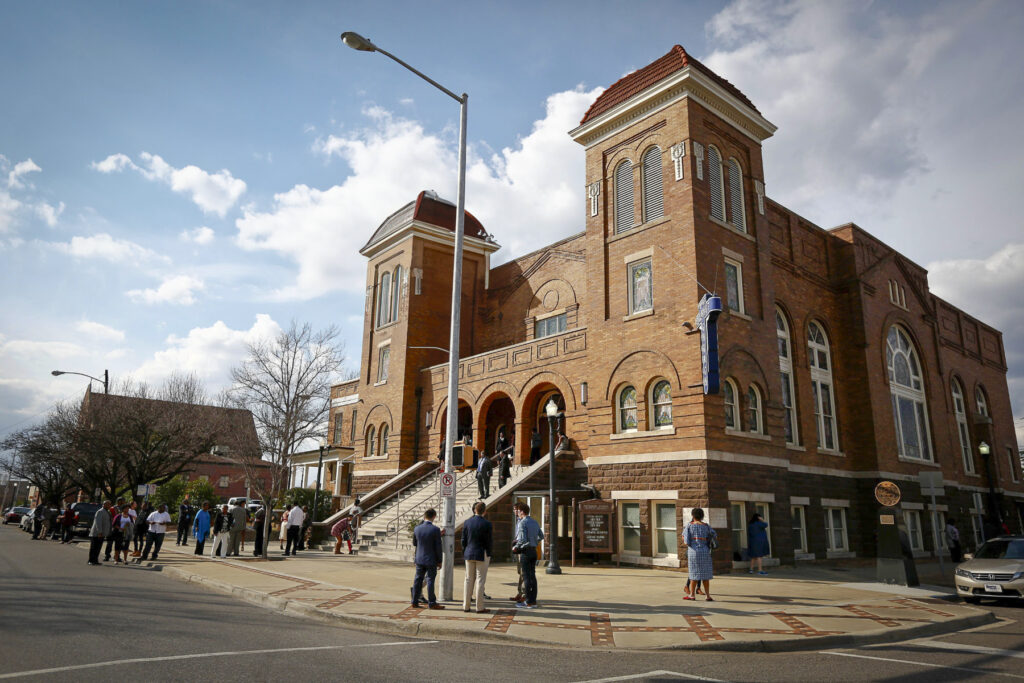
The 16th Street Baptist Church in Birmingham, Ala.
The current church was constructed in 1911 to meet the needs of a growing congregation. With seating for as many as 1,200 people, the sanctuary hosted concerts and lectures for many years before it became a meeting place for leaders within the Civil Rights Movement, Debro explained. It features a modified Romanesque and Byzantine design, twin towers with pointed domes, a cupola over the sanctuary that is accessible by a broad stairway, and a large basement auditorium with several rooms along the east and west sides. Built like a fortress, its thick walls enabled it to withstand the tragic bombing of 1963, according to Debro.
Through the Preserving Black Churches Project, the church received a $200,000 grant in 2023 that it is using to seed an endowment to support long-term maintenance and restoration of the church’s historic assets.
In 2024, 16th Street Baptist Church also received a $2.5 million grant from the Endowment through its Religion and Cultural Institutions Initiative. The grant is supporting the church’s Preservation and Expansion Project, which includes plans for a new Visitors and Education Center to be built next to the church. Interactive exhibitions for the new center, enhanced guided tours of the church, and lectures and other public programs on religion and on the Civil Rights Movement are being designed to further 16th Street Baptist’s legacy.
“We’ve inherited a jewel that we’re committed to preserving and maintaining,” Debro said.
The National Fund for Sacred Places (National Fund), which was launched in 2016 by the National Trust for Historic Preservation (National Trust) and Partners for Sacred Places. Since then, it has provided grants totaling more than $26 million to 138 congregations in 42 states, the District of Columbia and Puerto Rico. Through this program, Partners for Sacred Places provides churches with technical assistance and planning grants to assess their structures, design preservation plans and share their spaces with community organizations. The National Trust provides capital grants to help churches implement their plans.
The Preserving Black Churches Project was started by the National Trust’s African American Cultural Heritage Action Fund. Through the project, the National Trust provides congregations with support for planning, capital projects, programming, capacity building and long-term sustainability. Since the project began, 108 churches have been supported with grants totaling more than $19.4 million.
Launched in 2014 by Indiana Landmarks, the program helps Indiana congregations whose buildings are valued for their architectural, cultural, historical and religious significance repair and preserve their structures and use them more effectively to advance their ministries and serve their communities. Through the program, Indiana Landmarks has provided grants totaling more than $6.75 million to 92 congregations throughout the state.